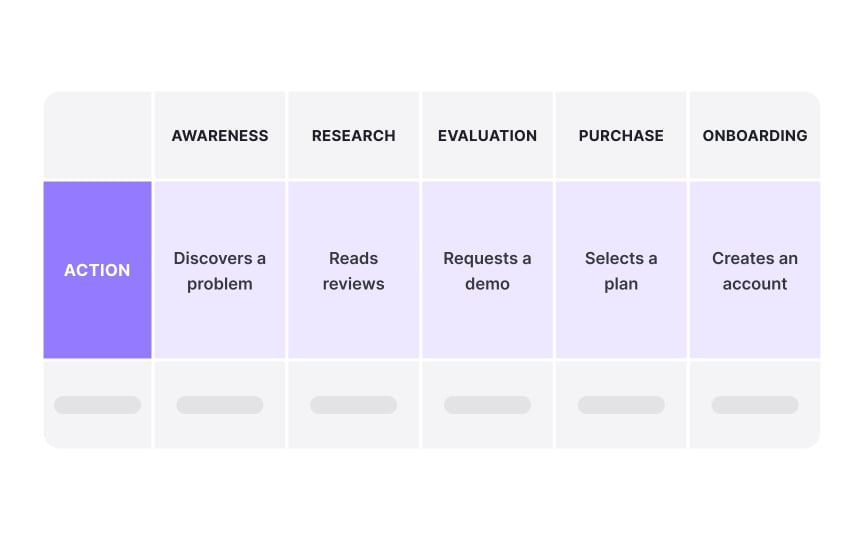The actions layer
The actions layer forms the backbone of every journey map, documenting what customers actually do at each stage. This layer captures observable behaviors like "searches for product reviews," "compares prices," or "contacts support." Actions should be specific and verb-focused, avoiding vague descriptions like "thinks about options."
Effective action descriptions use present tense and active voice to create immediacy. Instead of "Payment was processed," write "Processes payment." Keep each action concise, typically 3-5 words, making them scannable at a glance. Group related actions into logical stages that reflect natural breaks in the customer journey.
The granularity of actions depends on your map's purpose. Macro maps, used for strategic planning, might show broad actions like "Researches solutions." Micromaps, meant for operational fixes, break this down into steps like "Reads blog posts," "Downloads comparison guide," or "Watches demo video." Match the granularity to your audience and the decisions they need to make.

